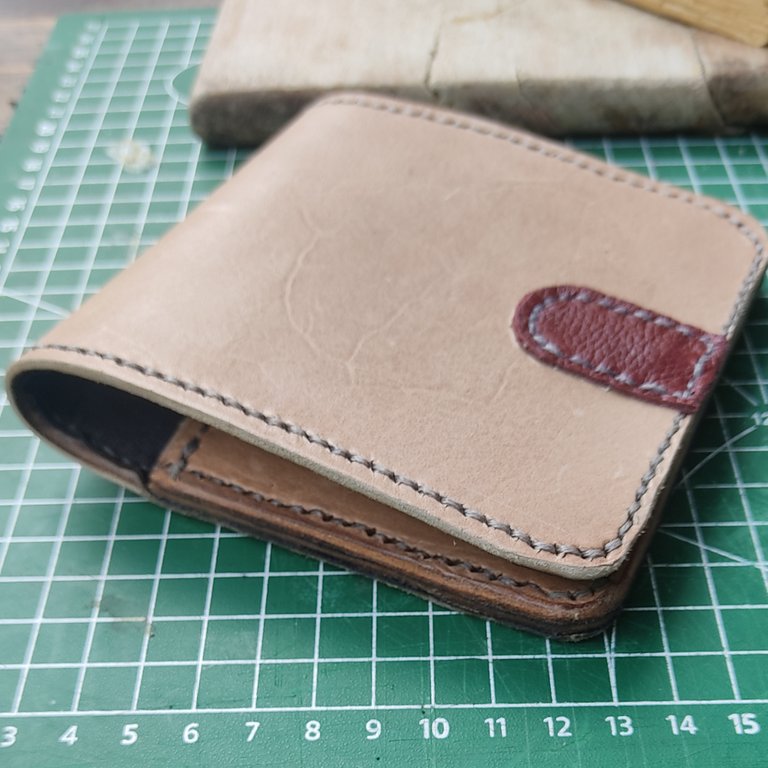
I use the NISI filter holder on my 12mm Laowa lens. It allows me to attach a round polarising filter and up to two rectangular 100mm filters in front of the lens. The 100mm filter was in a leatherette bag that was too big. The polarising filter in a cheap, unstable plastic box. Until recently, I always had the polarising filter in the holder. However, this is not a good solution for transport because the filter is completely unprotected.
Ich verwende an meinem 12mm Laowa Objektiv den Filterhalter von NISI. Damit lassen sich ein rundes Polarisationsfilter und bis zu zwei rechteckige 100mm Filter vor dem Objektiv befestigen. Das 100mm Filter war in einer zu großen Tasche aus Kunstleder untergebracht. Das Polfilter in einer billigen, instabilen Kunststoffbox. Bis vor Kurzem hatte ich das Polarisationsfilter immer im Halter. Allerdings ist das keine gute Lösung für den Transport weil das Filter völlig ungschützt ist.
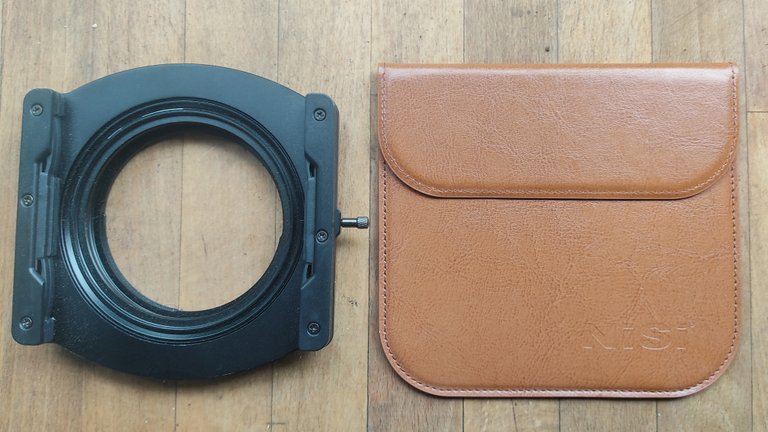
So I sewed a leather bag in which I can safely transport both filters. The bag is smaller than the much too large original bag for the rectangular filter.
Also nähte ich eine Tasche aus Leder, in der ich beide Filter sicher transportieren kann. Die Tasche ist kleiner als die viel zu große Originaltasche für das rechteckige Filter.
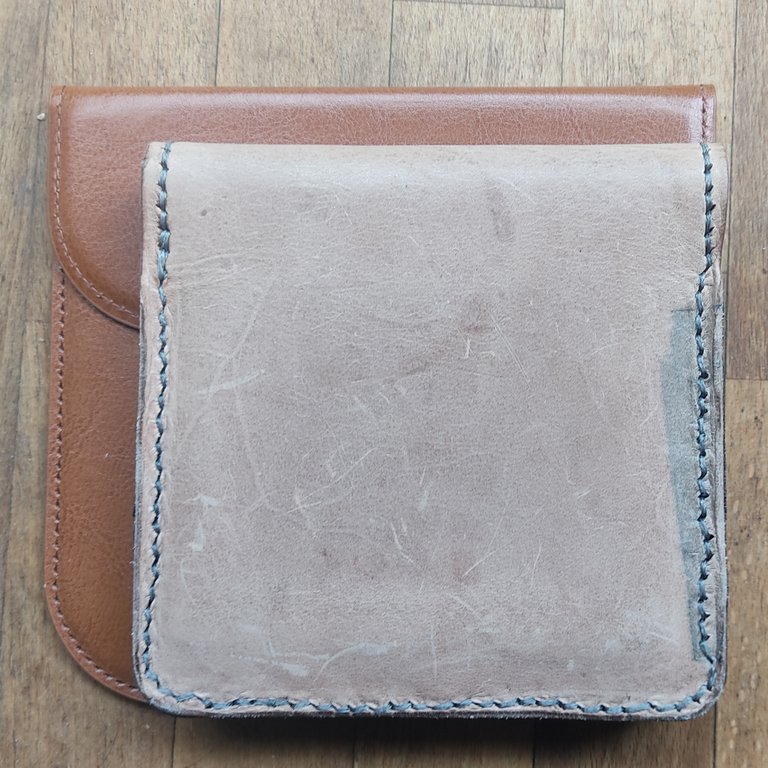
As you can see from the picture, this bag is definitely not my masterpiece. I briefly considered making a second one. But since the bag serves its purpose and the flaws are only optical, I rejected the idea and now use the bag as it is.
Wie auf dem Bild zu erkennen ist diese Tasche ganz sicher nicht mein Meisterwerk. Ich hatte kurz überlegt, ob ich ein zweites Exemplar herstelle. Da die Tasche aber ihren Zweck erfüllt und die Mängel nur optischer Natur sind, habe ich die Idee weider verworfen und benutze die Tasche jetzt so wie sie ist.

First I cut the three pieces of leather I needed for the bag. I cut the pieces for the two compartments two centimetres wider so that they would not be too small after shaping. Next, I put a lining on the inside of all three pieces to prevent the filters from being scratched by the rather hard leather.
Zuerst habe ich die drei Stücken Leder, die ich für die Tasche benötigt habe zugeschnitten. Die Teile für die beiden Fächer hatte ich zwei Zentimeter breiter geschnitten damit diese nach dem Formen keinesfalls zu klein sind. Als nächstes habe ich alle drei Teile auf der Innenseite mit einem Futter beklebt um zu verhindern, dass die Filter vom recht harten Leder zerkratzt werden.
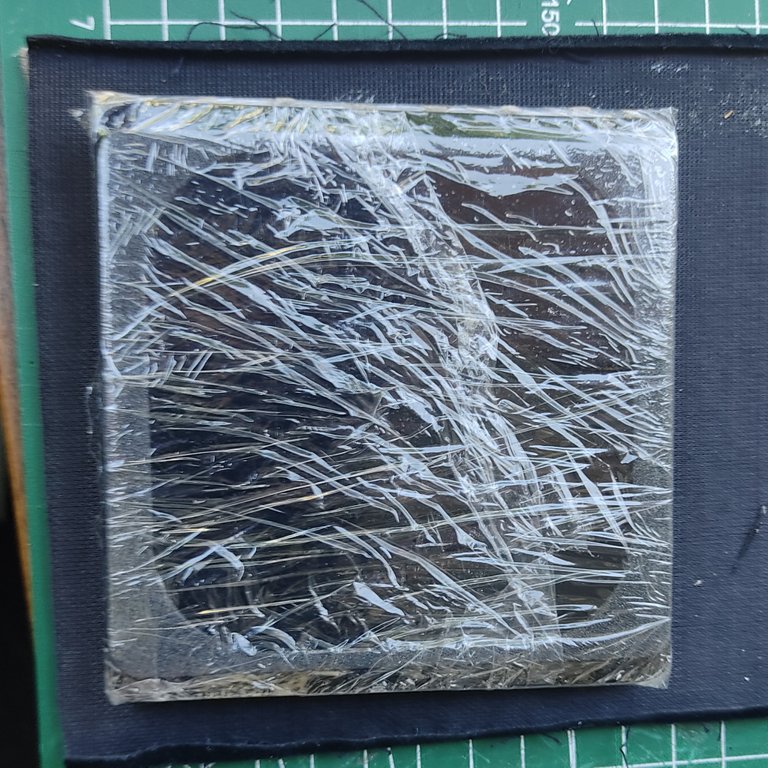
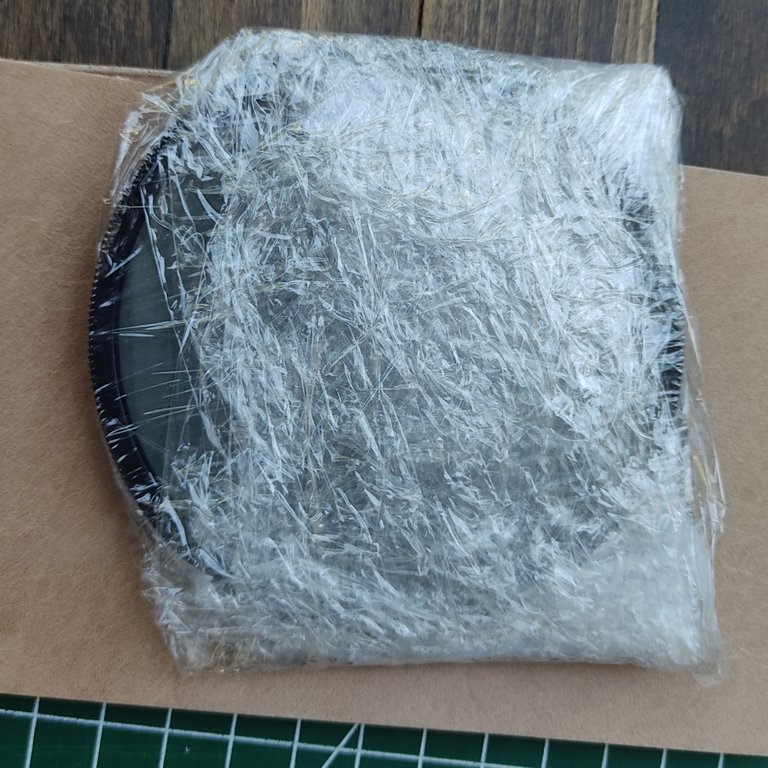
I wrapped both filters in cling film. On the one hand, so that they don't get wet later. On the other hand, so that it doesn't get too tight later.
Ich verpackte beide Filter in Frischhaltefolie. Einerseits damit sie später nicht nass werden. Andererseits damit das später nicht zu eng wird.
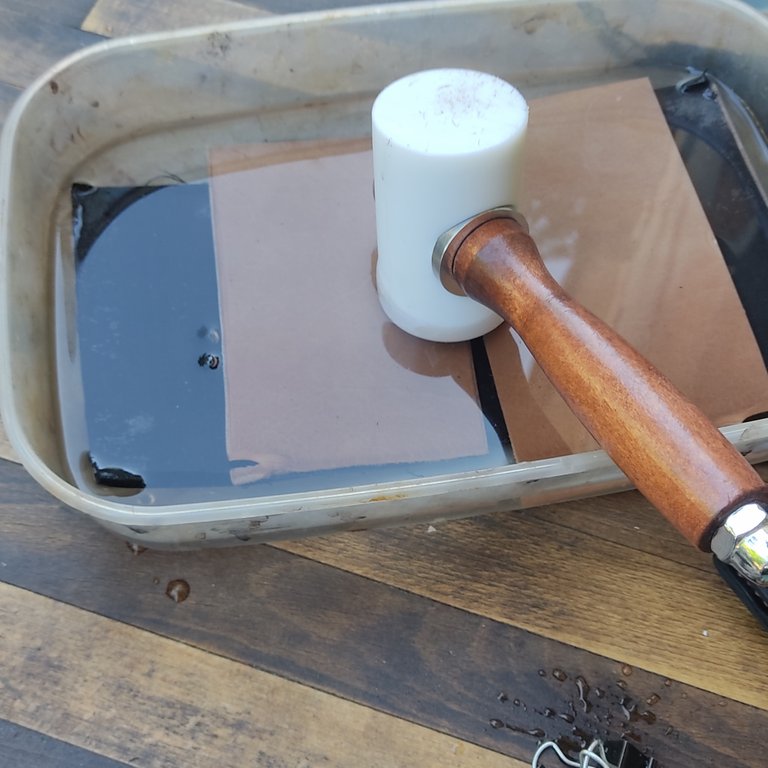
The three leather pieces were then put in the water for about 15 minutes. This softens the leather and makes it easy to shape into the desired form.
Die drei Lederstücken kamen dann für ca. 15 Minuten ins Wasser. Dadurch wird das Leder weich und lässt sich einfach in die gewünschte Form bringen.
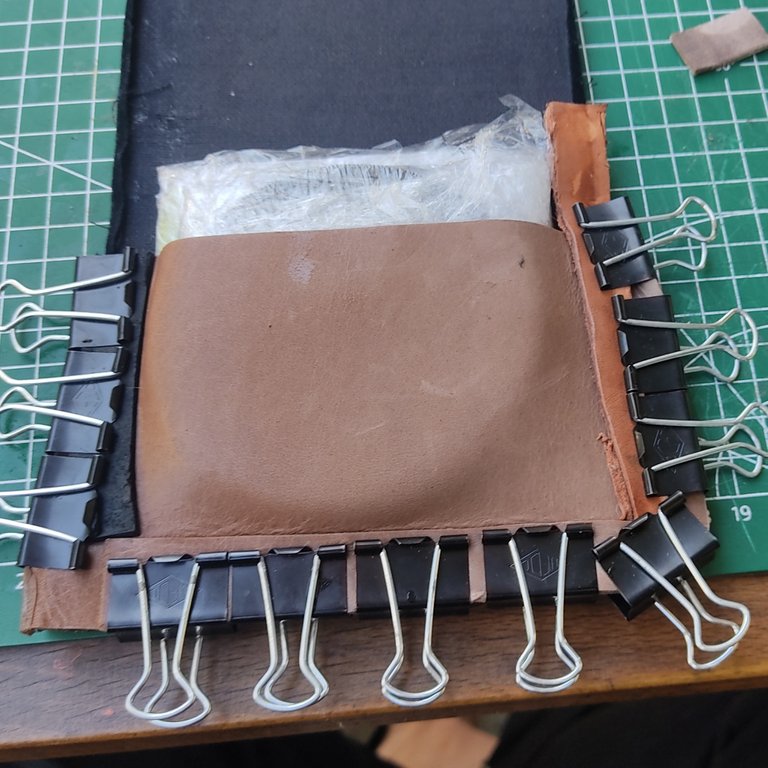
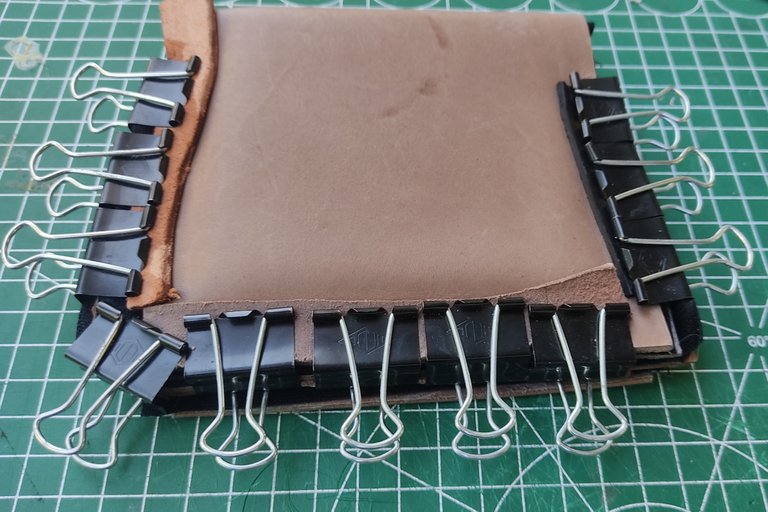
I stacked the three leather pieces and the two filters on top of each other and fixed the pieces with clamps. I put narrow leather strips under the clamps so that no marks of the clamps would be visible in the leather later.
Ich stapelte die drei Lederteile und die beiden Filter übereinander und fixierte die Teile mit Klammern. Damit später keine Abdrücke der Klammern im Leder zu sehen sind habe ich schmale Lederstreifen unter die Klammern gepackt.
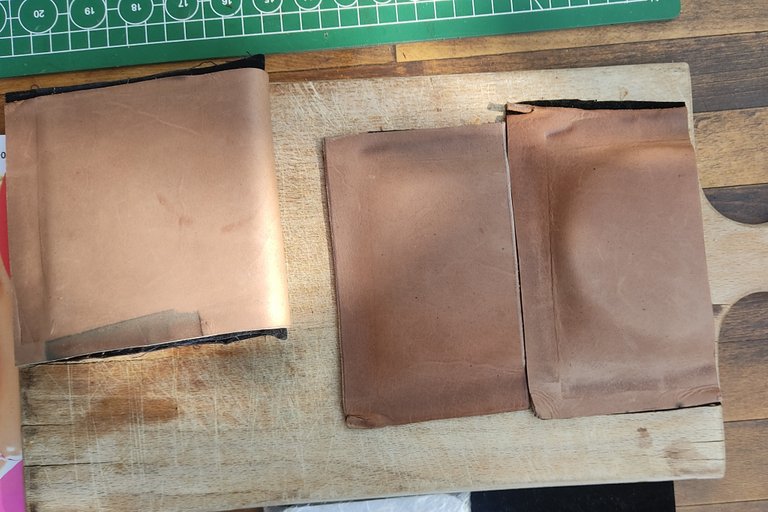
This is what the parts looked like after drying. You should not dry the leather too quickly because otherwise there is a risk that it will tear. I had put the bag in the shade at about 20°C. I was not able to dry it. After about 24 hours the parts were dry.
So sahen die Teile dann nach dem Trocknen aus. Man sollte das Leder nicht zu schnell trocknen weil ansonsten die Gefahr besteht, dass es reißt. Ich hatte die Tasche bei ca. 20°C in den Schatten gelegt. Nach ungefähr 24 Stunden waren die Teile dann trocken.

I then cut the leather pieces to fit, marked the seam, poked holes in the leather with the pricker, and then sewed it up with a sutler's seam. This technique involves sewing with two needles against each other. This means that there is no top and bottom seam, just like when sewing with a machine. A saddler's seam is therefore extremely durable.
Ich habe dann die Lederteile passend geschnitten, die Naht markiert, mit der Stechahle Löcher in das Leder gestochen und dann mit einer Stattlernaht vernäht. Bei dieser Technik wird mit zwei Nadeln gegeneinander genäht. Somit gibt es keine Ober- und Unternaht wie beim Nähen mit der Maschine. Eine Sattlernaht ist somit extrem haltbar.
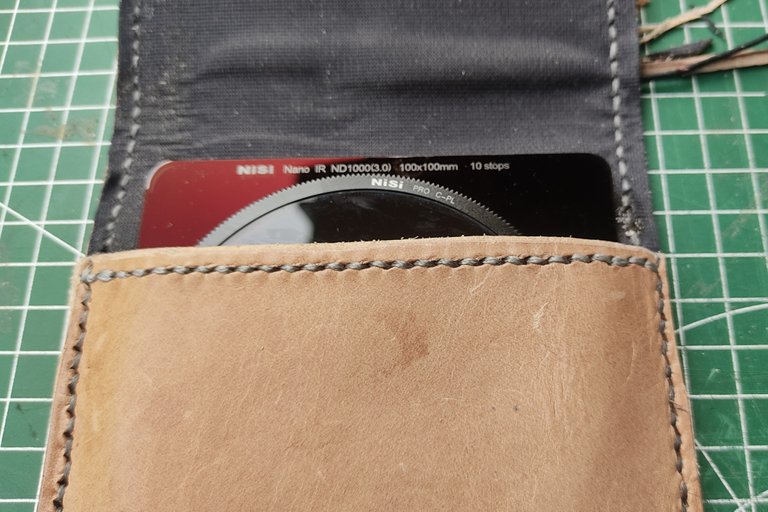
I sewed all the pieces together with only one seam. Because the yarn is very long in this case, it is not very comfortable.
Ich habe alle Teile mit nur einer Naht zusammen genäht. Weil das Garn in diesem Fall sehr lang ist, ist das nicht sehr komfortabel.
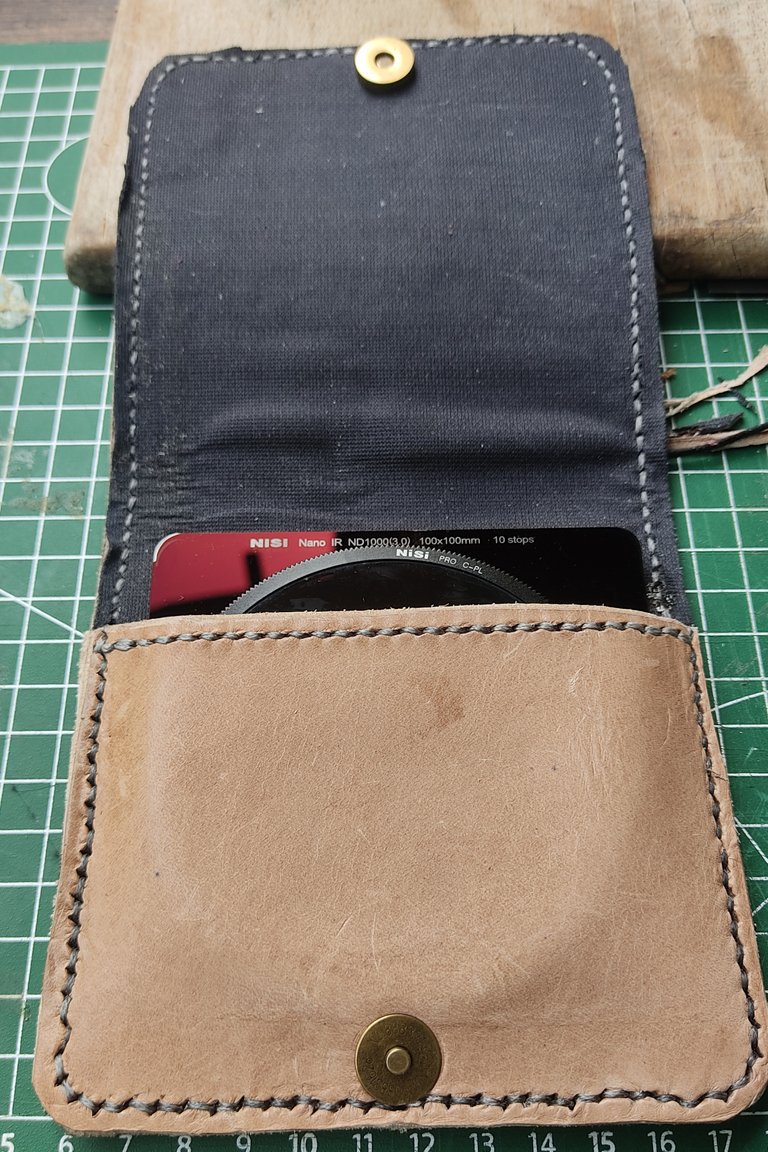
In the last step I straightened the edges of the lining a bit and polished the edges with a wood. All in all, about 4 hours of work went into the bag. The material cost about 15€.
Im letzten Schritt habe ich dann die Kanten des Futters noch etwas begradigt und die Kanten mit einem Holz poliert. Insgesamt stecken ungefähr 4 Arbeitsstunden in der Tasche. Das Material hat ungefähr 15€ gekostet.
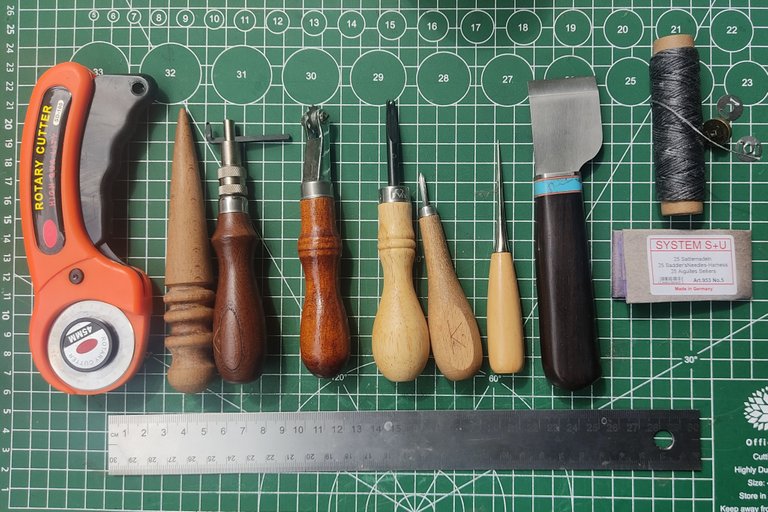
In the last picture you can see the tool I used. Cutting mat - steel ruler - rotary cutter - wood for polishing leather - seam countersink - seam marker - edge planer - pricking awl - round awl - Japanese leather knife - waxed hand sewing thread - saddler's needles - magnetic closure. I am not sure if the English translations are correct. Unfortunately, my English skills are not that good.
Im letzten Bild seht ihr das von mir verwendete Werkzeug. Schneidmatte - Stahllineal - Rollcutter - Holz zum Leder polieren - Nahtversenker - Nahtmarkierer - Kantenhobel - Stechahle - Rundahle - japanisches Ledermesser - gewachstes Handnähgarn - Sattlernadeln - Magnetverschluss

About me

Du bist ein Multitalent! Gibt es ein Handwerk, welches du nicht beherrscht? Eine schöne Filtertasche hast du da angefertigt. Ein unverkennbares Unikat. Unbezahlbar. 👌
Danke 😊
Leider gibt es viel zu viel Handwerk, welches ich nicht beherrsche. Ich bin mir auch nicht so sicher, ob der Sattlermeister bestätigen würde, dass ich dieses Handwerk beherrsche.
Schöne Arbeiten. Du wirst richtig zum Sattler. Cool cool!
Danke 😊
Oww quedo genial esa billetera amigo
Ich mag Deien Lederarbeiten.
Das freut mich. 😊
The rewards earned on this comment will go directly to the person sharing the post on Twitter as long as they are registered with @poshtoken. Sign up at https://hiveposh.com.